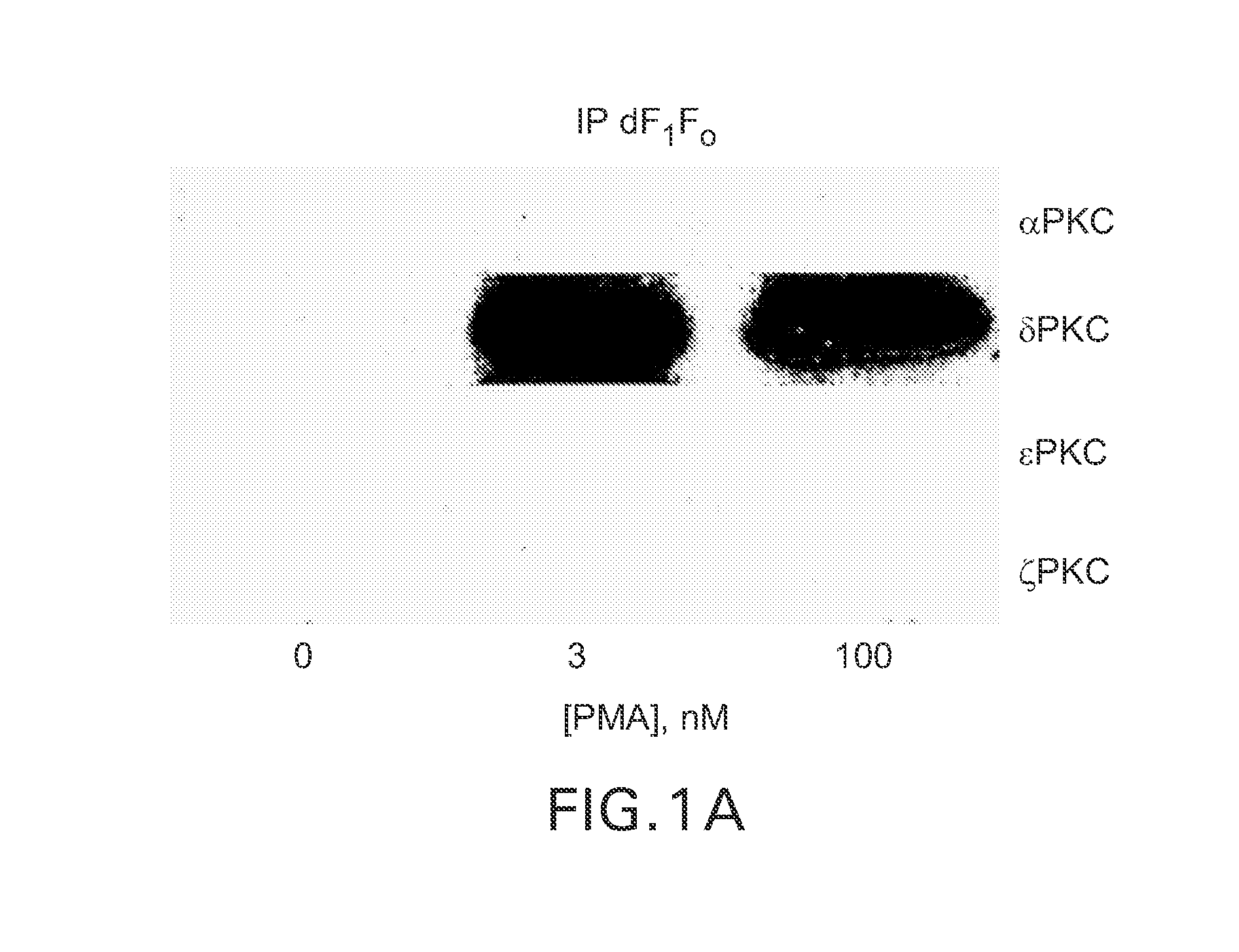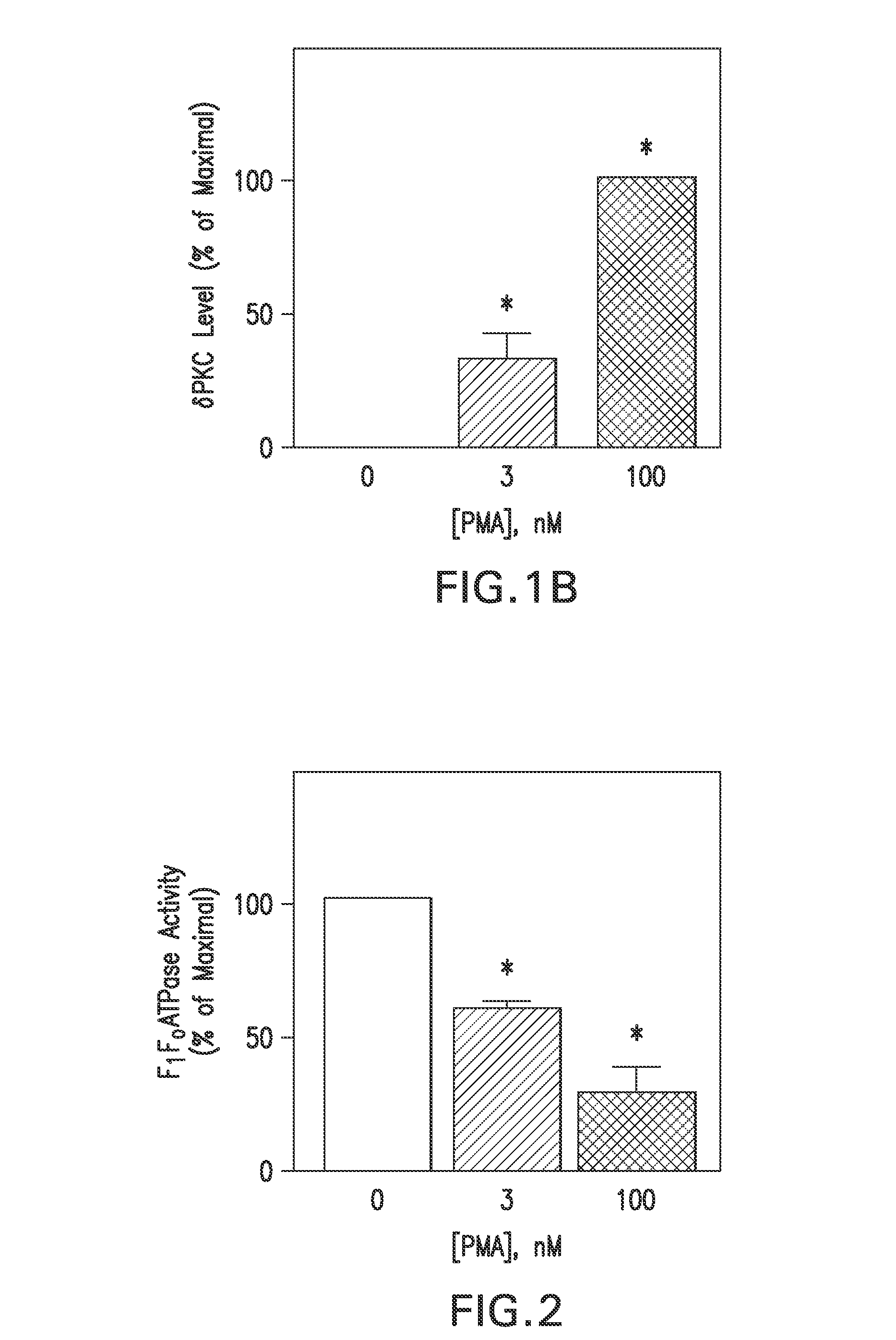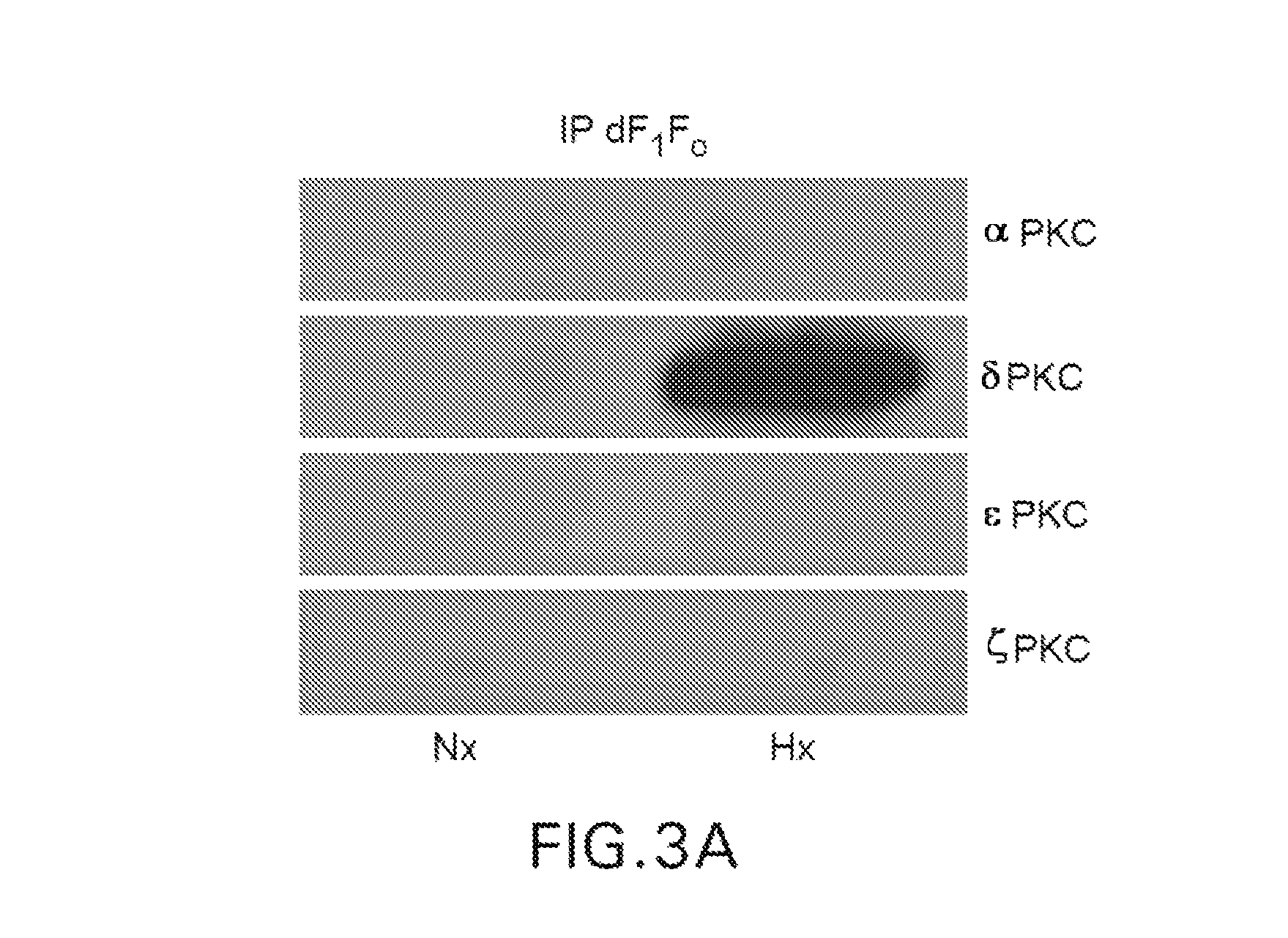Peptide modulators of the δPKC interaction with the d subunit of F1Fo ATP synthase/ATPase and uses thereof
a peptide and atp synthase technology, applied in the field of peptide modulators, can solve the problems of inability to fully account for the regulation of the fsub>1/sub>fo enzyme complex, the process is very inefficient, and the potent inhibitory effect of f1fo activity cannot be completely explained, so as to enhance the pkc-mediated inhibition of f1fo atp synthase or atpase activity, relieve the potency
- Summary
- Abstract
- Description
- Claims
- Application Information
AI Technical Summary
Benefits of technology
Problems solved by technology
Method used
Image
Examples
example 1
δPKC Co-Immunoprecipitates with the “d” Subunit of the F1Fo ATPase (dF1Fo) Following Treatment of Neonatal Cardiac Myocytes (NCMs) with Phorbol Ester
[0054]Phorbol esters such as 4-β phorbol 12-myristate-13-acetate (4-β PMA), are well known activators of most PKC isozymes and should be useful in determining if one or more PKC isozymes induced effects on the F1Fo complex. In FIG. 1 (F5) NCMs were treated with 3 or 100 nM 4-α (inactive isomer) and 4-β PMA (active isomer), mitochondria were isolated and solublized and then subjected to immunoprecipitation (IP) using antisera against the “d” subunit of F1Fo ATP synthase (dF1Fo). In FIG. 1, 4-α PMA is shown as “0” concentration and 413 PMA values are reported for 3-100 nM concentrations. IPs were next subjected to Western blot analyses with anti-PKC isozyme-selective antisera. The predominant PKC isozymes found in (NCM) mitochondrial are the α, δ, ε and ζPKC isozymes. Following exposure of NCMs to 100 nM 4-β PMA the δPKC isozyme (but not ...
example 2
4-β PMA Treatment Inhibits F1Fo ATPase Activity in NCMs
[0055]To determine if the above δPKC-dF1Fo co-IP correlated with changes in F1Fo activity, mitochondria from NCMs were isolated and the F1Fo complex were solublized. Since the mitochondrial electrochemical / proton gradient is disrupted by these isolation procedures, the enzyme operates in reverse-mode as an ATPase. Therefore, F1Fo ATPase activity in these assays was monitored as an index of F1Fo complex activity. NCMs were exposed to 0, 3, or 100 nM 4-β PMA and assayed for F1Fo ATPase activity. 3 nM 4-β PMA inhibited the basal, oligomycin-sensitive F1Fo ATPase activity by 39.7±3.1%. This inhibition was increased to 72.1±9.4% follow-ing a 20 min, 100 nM 4-β PMA exposure (FIG. 2). Mean±S.E. values are plotted in FIG. 2 from 4 independent experiments, each from a separate NCM preparation. (*) denotes statistically different from 0 nM PMA group. These results demonstrated that the 4-β PMA-induced δPKC-dF1Fo co-IP (FIG. 1) correlated ...
example 3
δPKC Co-IPs with dF1Fo Following Prolonged Hypoxia (Hx) in Neonatal Cardiac Myocytes (NCMs)
[0056]The work in FIGS. 1 and 2 involved treating NCMs with a well known PKC activator (4-β PMA) to determine its' effects on the δPKC-dF1Fo Co-IP and F1Fo ATPase function. It was next determined if these events could be induced in a model of cardiac ischemic injury. NCMs were therefore, exposed to 4 hr of Hx in a PlasLabs anaerobic chamber. Mitochondria were then isolated via Percoll / Optiprep gradients and subjected to dF1Fo IP. As in the studies with 4-β PMA, the resulting blots showed positive immunoreactivity for only the δPKC isozyme, suggesting that prolonged Hx exposures also induce a δPKC-dF1Fo co-IP (FIG. 3).
PUM
| Property | Measurement | Unit |
|---|---|---|
| pharmaceutical composition | aaaaa | aaaaa |
| energy | aaaaa | aaaaa |
| insulin resistance | aaaaa | aaaaa |
Abstract
Description
Claims
Application Information
 Login to View More
Login to View More - R&D
- Intellectual Property
- Life Sciences
- Materials
- Tech Scout
- Unparalleled Data Quality
- Higher Quality Content
- 60% Fewer Hallucinations
Browse by: Latest US Patents, China's latest patents, Technical Efficacy Thesaurus, Application Domain, Technology Topic, Popular Technical Reports.
© 2025 PatSnap. All rights reserved.Legal|Privacy policy|Modern Slavery Act Transparency Statement|Sitemap|About US| Contact US: help@patsnap.com



